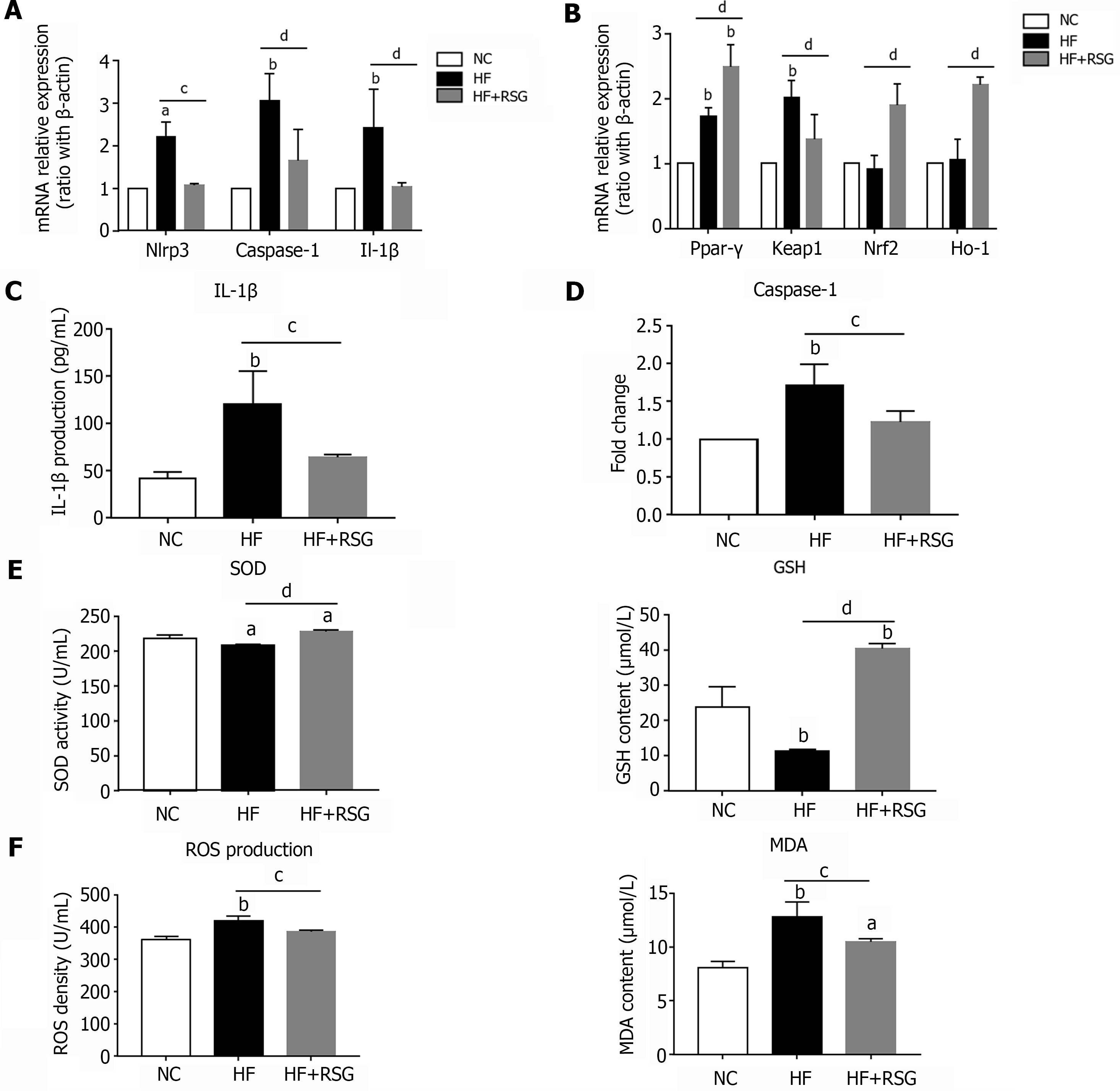Copyright
©The Author(s) 2022.
World J Hepatol. Jul 27, 2022; 14(7): 1365-1381
Published online Jul 27, 2022. doi: 10.4254/wjh.v14.i7.1365
Published online Jul 27, 2022. doi: 10.4254/wjh.v14.i7.1365
Figure 6 Rosiglitazone improved NLRP3 inflammasome activation and oxidative stress in high-fat diet-induced nonalcoholic fatty liver disease mice.
Wild-type C57BL/6 mice were fed either an normal control diet or an high-fat diet for 16 wk. Rosiglitazone was administered by oral gavage once daily for 28 consecutive days after 12 wk of HF diet feeding. A: mRNA expression of NLRP3 inflammasome-related genes in the bulk cells of liver; B: mRNA expression of Ppar-γ and oxidative stress-related genes in the liver; C: IL-1β Level in the plasma; D: Caspase-1 activity in the liver; E: SOD activity and GSH content in the plasma; F: ROS and MDA production in the plasma. Values are expressed as the mean ± SE of the mean, aP < 0.05, bP < 0.01 vs NC; cP < 0.05, dP < 0.01 comparison of the designated two groups, n = 10 animals per group. HF: High-fat; NC: Normal control; RSG: Rosiglitazone; Keap1: Kelch-like ECH-associated protein 1; Nrf2: NF-E2-related factor 2; Ho-1: Heme oxygenase-1; Nlrp3: NLR family pyrin domain-containing 3; Caspase-1: Cysteinyl aspartate-specific proteinase-1; Ppar-γ: Peroxisome proliferators-activated receptor-γ; IL: Interleukin; SOD: Superoxide dismutase; GSH: Glutathione; MDA: Malondialdehyde; ROS: Reactive oxygen species.
- Citation: Li XY, Ji PX, Ni XX, Chen YX, Sheng L, Lian M, Guo CJ, Hua J. Regulation of PPAR-γ activity in lipid-laden hepatocytes affects macrophage polarization and inflammation in nonalcoholic fatty liver disease. World J Hepatol 2022; 14(7): 1365-1381
- URL: https://www.wjgnet.com/1948-5182/full/v14/i7/1365.htm
- DOI: https://dx.doi.org/10.4254/wjh.v14.i7.1365









